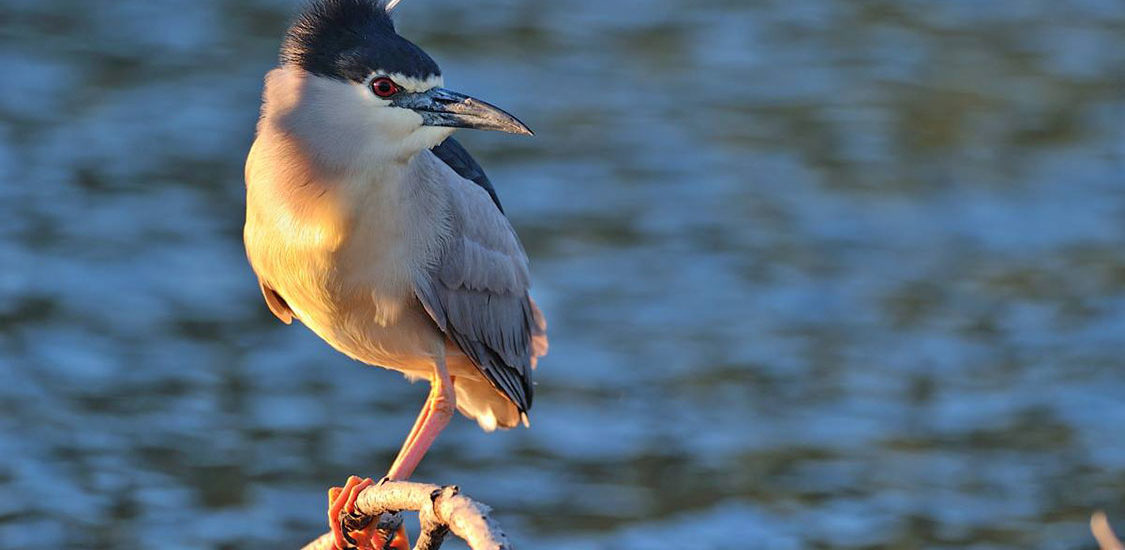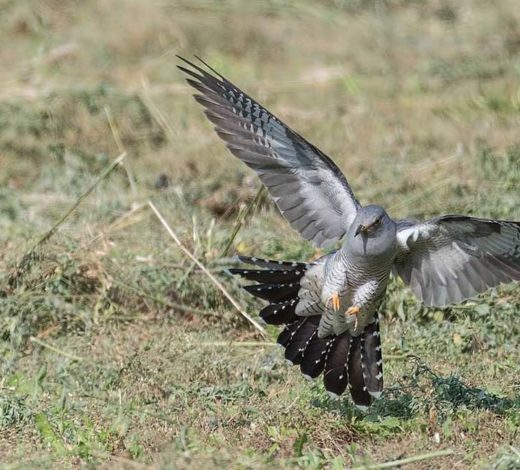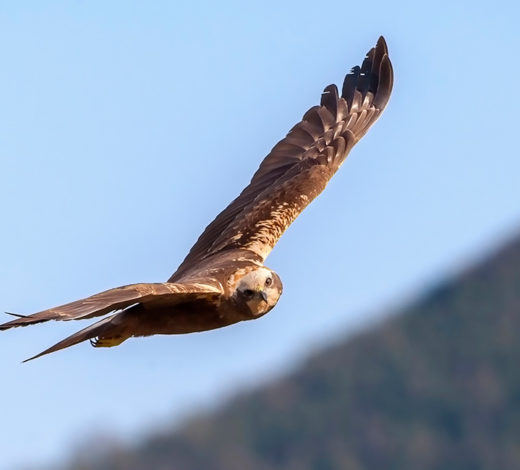Black-Crowned Night Heron
(Nycticorax nycticorax)
The scientific name of this bird means ‘night raven’, since its call resembles that of a raven, which it usually emits when flying at sunset and at night.
Description
Adult individuals have a black back, nape, and crown, grey sides and wings, and white chest, neck, cheeks, and belly. Two long white feathers extend from the nape. The eyes are red and the beak black. Wingspan: up to 112 cm. Length: 61 cm.
Males and females are similar. The young are brown, with whitish spots and a yellow beak. Black-crowned night herons are rather gregarious, even outside the reproductive period, so they can easily be seen in small groups, accompanied by other species of herons. During the day they can easily be seen perched on shrubs emerging from the water.
Habitat
They frequent both marshes and riverbanks. For nest-building, they prefer large bushes near bodies of water with willows, but in the Reserve, they have chosen false indigo bushes (Amorpha fruticosa) as their home. This exotic plant has slowly invaded all the banks and, although its expansion is strictly controlled, it offers shelter for various bird species.
Observation in the Torbiera Reserve
Black-crowned night herons are present in the Reserve throughout spring and summer. They migrate towards the end of September and return at the beginning of March. They gather to leave at sunset and travel at night, either alone or in relatively large groups. They mainly spend the winter along rivers in tropical Africa, just north of the equator.



